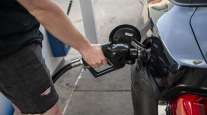US Retail Sales Rose at 0.5% Annual Rate in July

WASHINGTON — Americans shopped at a healthy pace in July, buying more cars, clothes and appliances, evidence that confident consumers are helping drive robust economic growth.
Retail sales rose at a 0.5% annual rate in July, after a 0.2% increase the previous month, the Commerce Department said Aug. 15. June’s increase, though, was revised lower from a previous estimate of a 0.5% annual rate.
Consumers appear to be feeling upbeat and are in overall solid financial shape. The unemployment rate is near an 18-year low. And economic growth, along with hiring, has accelerated. On average, Americans are saving more, which may encourage future spending.
RELATED: Diesel Slips 0.6¢ to $3.217
Sales last month rose at auto dealers and grocery stores and jumped at clothing shops. Americans boosted their spending at restaurants and bars 1.3% in July from June. Gas station sales increased at a 0.8% annual rate from a month earlier.
Spending at restaurants and bars has jumped nearly 10% from a year earlier. That’s a bigger increase than for online shopping, which rose 8.7% from a year ago.

Sales at gas stations have jumped 22% in the past year. (TT file photo)
Some of last month’s spending gains reflect higher prices, particularly at gas stations, where sales have jumped 22% in the past year.
The healthy spending figures coincide with other data suggesting that American households are in decent financial shape. The government last month revised the savings rate sharply higher, to 7.2% in the first quarter from 3.3%. And fewer people are falling behind on their loans.
More savings could fuel future spending growth. Before the data were revised, some economists had worried that consumers would have to cut back on shopping because the savings rate was declining.
“It gives us comfort that consumers are nowhere near to being as overstretched as they were in the years heading into the Great Recession,” JPMorgan Chase economist Michael Feroli wrote in a research note.
The savings rate is the difference between all Americans’ income and spending and is skewed higher by greater saving among higher income households.
A separate report Aug. 14 by the Federal Reserve Bank of New York showed that Americans are borrowing more even as interest rates rise. That is a sign of confidence that households can pay off the debts. Higher credit card debt and more mortgage and auto loans drove the increase.
Yet the report showed that Americans are paying off the loans. The percentage of borrowers falling 30 days or more behind on loan payments declined slightly to 4.5%, down from about 6% four years ago.
Still, U.S. households are facing some headwinds. Higher gas and housing costs lifted inflation to an annual rate of 2.9% in July, the highest in six years. That more than offsets the average hourly wage gains of 2.7% that Americans have received in the past year.




